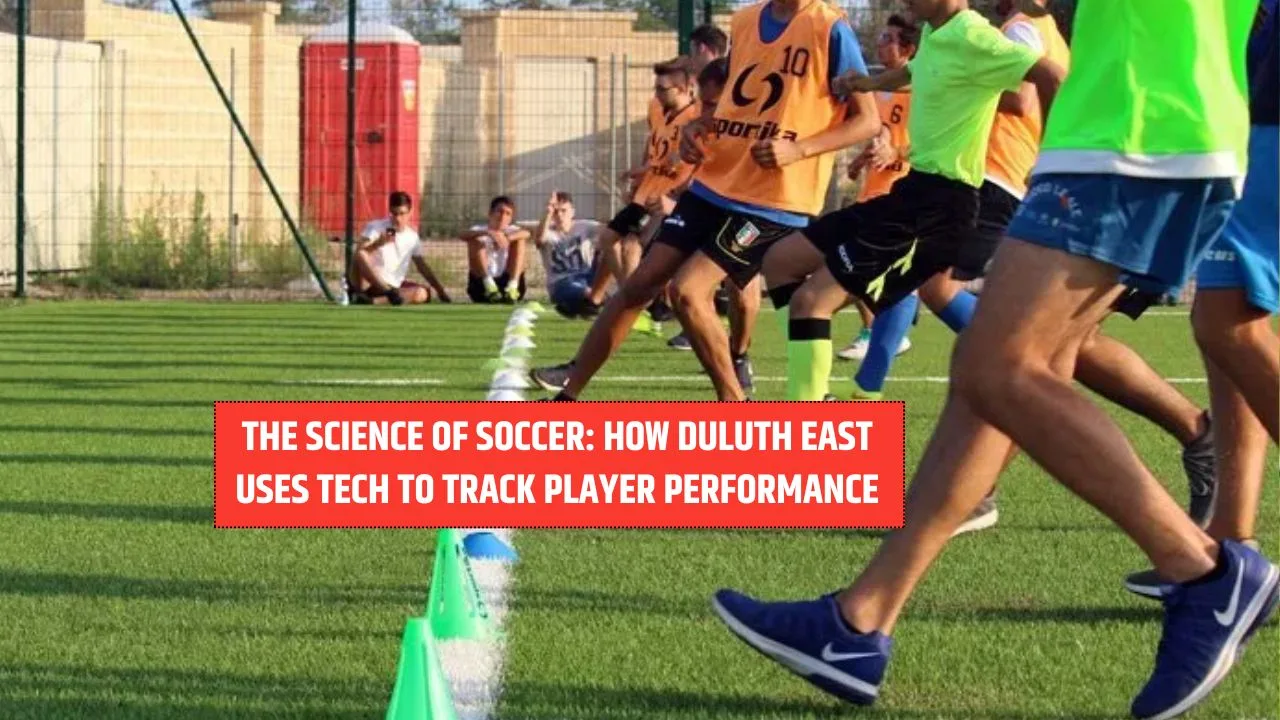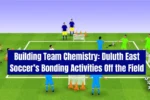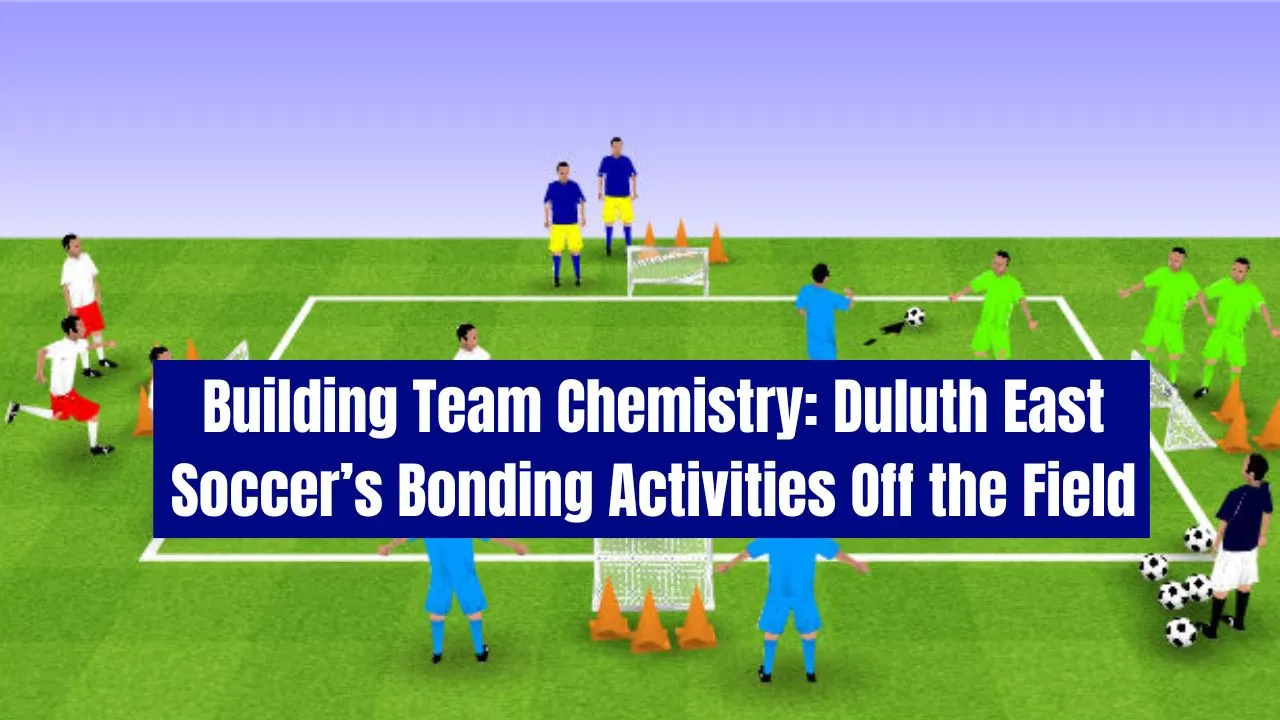The science of soccer is becoming a powerful force behind modern team development and performance improvement. What once relied solely on instinct, experience, and coaching tradition is now being reshaped by data-driven insights and advanced technology. For teams aiming to compete at higher levels, embracing this evolution isn’t optional—it’s essential.
At Duluth East, the fusion of athletic effort and sports technology is driving a new era of soccer. This article dives into how the high school team is using modern tools to not only train smarter but also play with a precision that would have seemed futuristic a decade ago. From GPS trackers in sports to in-depth video analysis in soccer, Duluth East shows how a commitment to innovation is elevating both individual and team performance.
The Science of Soccer: A New Era of Training and Performance
The science of soccer refers to the systematic use of technology and data to enhance how players train, recover, and perform. At its core, it blends physical performance with analytics, offering clear metrics on speed, movement, workload, and decision-making. For teams like Duluth East, this means less guesswork and more precise coaching. By using real-time performance tracking tools and reviewing gameplay through video, the coaching staff can optimize each player’s growth. It’s a forward-thinking strategy that ensures every sprint, pass, and goal is part of a broader plan supported by smart data.
How Duluth East Embraced Soccer Tech
Duluth East wasn’t just chasing trends when it began integrating soccer analytics into its program—it saw a clear opportunity. By implementing performance tracking tools, the team shifted from subjective feedback to objective data. Coaches now get immediate insights into player output during practices and games. This tech-forward mindset has reshaped how they prepare, from creating smarter drills to optimizing game strategies.
Rather than treating fitness as a one-size-fits-all model, Duluth East uses data to understand each athlete’s physical thresholds. By comparing metrics over time, the coaching staff can identify when a player is peaking or needs recovery. This ensures players are physically ready when it matters most.
Wearable Devices in Training
At the core of Duluth East’s tech setup are wearable fitness trackers, especially GPS-based units. These compact devices, worn on the upper back or wrist, gather data such as distance covered, acceleration, top speed, and changes in direction. For a sport like soccer, where agility and endurance are key, this information is vital.
For instance, if a midfielder’s high-speed running distance drops over a week, it could point to fatigue or even risk of injury. Instead of waiting for visible signs, the data alerts coaches early. The integration of GPS trackers in sports has revolutionized how Duluth East schedules rest days, conditions its players, and monitors long-term fitness trends.
Video Analysis for Better Tactics
Video has always been part of coaching, but now it’s far more than replaying highlights. At Duluth East, video analysis in soccer is an everyday tool. Every match and major training session is recorded from multiple angles, then analyzed with software that can tag individual actions, track player movements, and even suggest strategy adjustments.
For example, coaches can isolate every time a defender was out of position or when a striker had an open shot but chose to pass. This visual learning helps players recognize patterns, correct errors, and replicate successful plays. It creates a culture where players take ownership of their development through informed reflection.
Personalized Training Programs
One of the most effective uses of data at Duluth East is in designing personalized training in soccer. Gone are the days when every athlete ran the same drills regardless of their needs. With technology capturing key performance indicators, training is now tailored to what each player needs most.
A winger struggling with sprint stamina might get high-intensity interval workouts, while a central midfielder may focus on recovery and ball distribution. These adjustments are not guesswork—they’re rooted in data trends over weeks of tracking. The result is a more focused, efficient, and safe path to development.
Benefits of Using Tech in Soccer
Here are two major benefits Duluth East gains from using technology in soccer:
- Injury Prevention: With constant monitoring of workload, heart rate, and fatigue markers, coaches can spot early warning signs before they lead to injury. Adjustments can be made quickly, keeping players on the field longer and healthier.
- Performance Improvement: Each player’s strengths and weaknesses are tracked over time. This leads to goal-oriented coaching, where drills and strategies are matched to individual progress, rather than general assumptions.
Impact on Team Strategy
With access to detailed metrics and real-time feedback, Duluth East has the ability to make smarter strategic decisions. Whether it’s setting a high press, adjusting defensive lines, or managing player substitutions, the data supports every tactical shift. This use of the science of soccer transforms raw effort into strategic execution.
For example, if data shows a player covers significantly more ground than others, the coach might assign them a less physically demanding role in the next game to prevent burnout. These informed choices lead to more balanced team dynamics and often a better final score.
Player Development Over Time
Another standout benefit of Duluth East’s approach is how it allows coaches to track soccer data over an entire season—or even several seasons. This long-term tracking offers a big-picture view of a player’s evolution, making it easier to identify when someone is ready to take on a new role or needs extra focus on certain skills.
For players aiming to compete in college or higher levels, having a portfolio of measurable growth and performance is a powerful advantage. It shows commitment, consistency, and the ability to thrive in a data-driven environment—qualities increasingly valued by scouts and coaches alike.
Future of Soccer at Duluth East
As the technology continues to evolve, so too will Duluth East’s application of it. Tools like AI-powered analytics and virtual reality simulations may soon join their toolkit. The school is setting a standard in how high school soccer tech can be used to not only improve outcomes but also prepare student-athletes for the future of competitive sports.
By staying ahead of the curve, Duluth East ensures that the science of soccer becomes a long-term advantage, not just a short-term boost. The team is no longer just training harder—they’re training smarter.
FAQs
1. What is the science of soccer at Duluth East?
It’s the use of technology like GPS trackers, video analysis, and heart rate monitors to improve training, performance, and player safety.
2. How do GPS trackers help soccer players?
They track movement, speed, and distance, allowing coaches to adjust training and prevent overuse injuries.
3. Why is video analysis important in soccer training?
It helps players see their decisions and movements in real game settings, making it easier to correct mistakes and improve tactics.
4. Can personalized training make a difference in soccer performance?
Yes, custom programs based on data help players develop specific skills and recover properly, which boosts overall performance.
5. Is this technology only for professional soccer teams?
No, Duluth East shows that even high school teams can benefit from affordable and effective soccer technology.
Conclusion
Duluth East is proving that embracing the science of soccer is not just a trend but a transformation. By combining coaching with smart data, the team is making better decisions, improving player performance, and building a safer training environment. They’ve found the sweet spot between tradition and innovation—where passion meets precision.
This model isn’t just for elite teams; it’s a glimpse into the future of soccer at every level. If you found this insight valuable, share it with a fellow soccer enthusiast or explore how these methods could benefit your own team or training. The science is here to stay—and it’s changing the game for the better.











